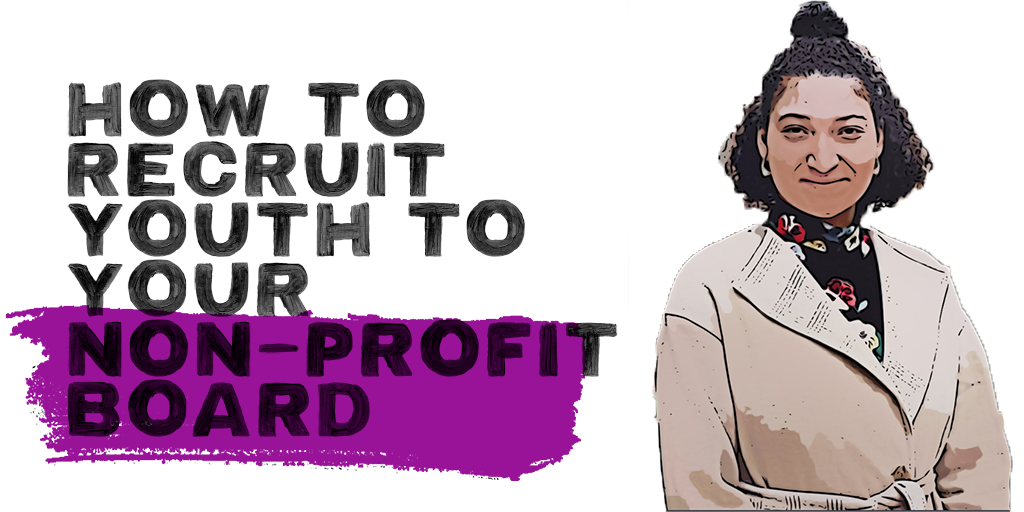How to Recruit Youth to Your Non-Profit Board
Why It Matters
By 2030, almost one in four Canadians will be seniors. To fill the gap, non-profit boards will need to bring on young people — not to mention address their lack of diversity in other areas, too. We’re here to help, with insights from our 2019 Youth Reshaping Governance list.

It’s no secret that non-profits have a major diversity gap. While women account for the majority of the sector’s workforce, men hold a disproportionate number of leadership positions, according to the first major study on the Canadian non-profit sector. When it comes to race, one US report shows nearly 90% of employees identify as white, with Canada coming close behind at 89%.
When it comes to age, a study by Youth and Philanthropy Initiative Canada revealed that the majority of high school students (78%) are either indifferent or disinterested about pursuing careers in the non-profit sector, which was attributed to a lack of information about this type of work. With “an imminent wave of retirement in the coming years,” the report underscored the need to examine youth perspectives on joining the non-profit sector.
Diversity is beneficial to an organization’s bottom line, and age is no exception. Despite this, it continues to be overlooked, even as Canada’s population is in a fundamental shift — by 2030, nearly one in four Canadians will be a senior.
As part of our series on youth reshaping governance, we are recognizing young leaders making a unique and significant contribution as non-profit board directors. We asked the top nominees from our 2019 Youth Reshaping Governance list to share how non-profit organizations can better recruit and retain youth leaders.
Here are their top recommendations.
1) Get creative and go into new spaces.
There is no shortage of youth who are passionate about social causes and would be keen to serve on a board, but you have to meet them where they are, which means going outside your orbit.
Ashley Richard, a board member of Red River College, suggests using social media to research and reach out to potential board members. “Young people are always posting about the amazing initiatives they are doing. There is [definitely] a talented and capable young person who is aligned with your board values and mission,” she says. Ashley also recommends looking at post-secondary student leadership groups to find young people who are already active in leadership roles.
2) Choose passion over experience.
Youth may not have decades of professional experience or the financial means to donate to an organization, but their passion will more than make up for it. Nabil Ali, a board member of the Ontario Council for International Co-operation, says young people can contribute new ideas, develop innovative fundraising tools and approach problems from a different perspective.
“An inexperienced yet passionate and eager young person brings fresh insight and so much energy [to an organization], it tends to have a ripple effect throughout meetings that are far-reaching,” Anna Johnson explained.
3) Practice social justice principles and honour lived experiences.
An organization that lives its values and centres social justice principles (equity, access, participation, and rights) is more likely to attract younger board members.
Alexander Dirksen, a board member of Apathy Is Boring, says existing leadership teams should do some introspection when engaging a younger demographic. “What measures are existing board members undertaking to deepen their understanding of, and commitment to, social justice principles? In the context of a board, in which ‘expertise’ is often assessed as job titles and professional designations, how is lived experience seen, valued, and respected?”
4) Give youth an equal seat at the table.
Over and over, youth leaders shared with us how important it is that their perspectives and skillsets are valued. No one wants to be the token youth member on a board.
Sydney Pigott, a board member of Springtide Resources, says this is particularly important for youth who belong to equity-seeking groups, adding that boards who value the lived experiences and perspectives of youth will be more successful in recruiting and retaining them. “At the end of the day, we have a lot to offer an organization and should have just as much agency on a board as any other director.”
5) Make youth comfortable and set them up for success.
Youth mentioned that being on boards with people who have significantly more professional experience can be intimidating, and stressed the importance of having support during the transition.
“It’s often difficult to feel as though one belongs in a space typically dominated by more experienced people,” Ambika Opal, a board member of Social Development Centre Waterloo, shares, “but being treated and thought of as equals will help youth feel like they belong on boards.”
They suggested a few ways that existing board members could help, such as: offering crash courses on topics like strategy and budgeting, or “partnering” with a specific board member for mentorship. To ease some pressure during meetings, they also suggested providing alternative ways to share feedback afterwards, like via email.
To learn more about these young leaders and their journeys, check out our 21 Youth Reshaping Governance 2019 list.

